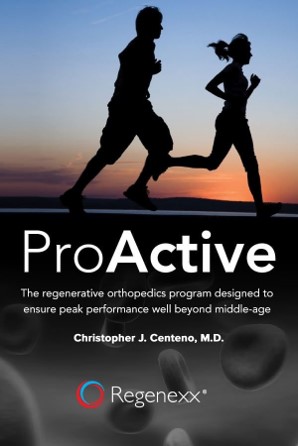Can We Reverse Skeletal Muscle Aging?

Credit: Shutterstock
One of the aspects of aging is that our muscles get old and weaker much like the skin on our face develops wrinkles. Hence, if we are to find treatments that reverse aging, we need to find a way to get our muscles younger. Let’s dive into a study that tried to accomplish that goal and learn some things about muscle stem cells in the process.
What Is NANOG?
Scientists have a way of naming stuff that usually carries a story or is ironic in some way. NANOG, the gene in this story of muscle aging, is named after the Irish Tír na nÓg (“Land of the Young”). In Irish folklore, it’s a place of everlasting youth, beauty, and health.
NANOG’s job is to help stem cells maintain their ability to turn into many other cells (pluripotency) by suppressing factors that want them to commit to being one cell type. Hence, this system is active in embryonic and other stem cells that have yet to determine their final fate.
Your body is capable of self-repair through billions of stem cells that live in your tissues. Muscles are unique in that they have a reason to have more stem cells than most tissues, as they must get bigger and stronger when the demand on the muscle increases. Hence, they have loads of stem cells which are also called satellite stem cells.
A muscle satellite cell has a few options. It can become a muscle cell or it can also stay in an undifferentiated stem cell state. For healthy young muscles, you want as many of these undifferentiated satellite cells as possible scattered throughout your muscle. Why? Because if you go to the gym to lift weights, you’ll shred hundreds to thousands of muscle cells that need to be repaired or replaced. As we age, if they become fewer and fewer and more of them commit to become muscle cells, that results in older and more frail muscles.
Aging Muscle
People lose approximately 3 to 8 percent of their muscle mass per decade after the age of 30 (and even more after 60) (1). You and I can usually see this with our own eyes, as the elderly generally have smaller muscles and seem to waste away. Hence, if order to have a cure for aging, we need to understand how to reverse that trend.
One practical and easy way to do that is to lift weights as we age. I’ve blogged before about how lifelong exercisers lose less muscle than those who are sedentary. In fact, the muscles of elderly weight lifters are often more similar to young muscles than that of their same-age counterparts. However, we may one day have a pill that can do the same thing without all of that grunting and sweating. After all, kids that are only a little active have better muscles than an elderly adult with the same activity level. That works because of the NANOG system. Hence, to get to a place where you can pick up a prescription for anti-aging pills, we need to understand how to manipulate this gene.
New Research
The new study, published by scientists in Buffalo, New York was conducted on prematurely aging mice whose myoblasts (more mature than muscle satellite cells and direct precursors to muscle cells) were senescent, meaning they could no longer divide or grow (2). The researchers manipulated the NANOG genes in these cells and found that it also increased the number of muscle stem cells in the muscle. Bonus: It did that without reprogramming cells to a pluripotent state, a process common in regenerative medicine but that can also cause tumors to develop. Hence, these mice had young muscles without all of that exercise!
Use It or Lose It
Both of these concepts of restoring muscles work the same way. The easy one is just lifting weights and keeping your musculoskeletal system in good working order as you age so that you can keep your muscles young. This works by forcing your muscles to keep muscle stem cells (satellite cells) in abundance because they’re needed to repair muscle damage that happens when lifting weights. Now you know that your body does this through the NANOG gene pathway. Hence, as you age, do yourself a favor, keep your muscles young by using them. If you don’t, you will lose that muscle mass, which not only doesn’t look flattering but will also cause many downstream issues like osteoporosis (weak bones).
While the saying “use it or lose it” sounds good, many people find that they can’t do this because their joints, tendons, and ligaments won’t cooperate. That’s where we come in, by helping people avoid invasive surgeries and keeping them active as they age. To learn more about how we do that, read my book ProActive:
The upshot? Now you understand that there’s a reason people who aren’t active lose muscle as they age. It’s because the muscle stem cells get depleted. That happens through a system called NANOG, which was named after the Irish fountain of youth. In the meantime, until NANOG activating pills arrive at your local CVS or Walgreens, you can do two things to keep your muscle mass. First, make sure your joints, ligaments, and muscles can do the needed work by using our ProActive program. Second, lift heavy weights as you age to keep your muscles young!
___________________________________
References
- Volpi E, Nazemi R, Fujita S. Muscle tissue changes with aging. Curr Opin Clin Nutr Metab Care. 2004;7(4):405-410. doi:10.1097/01.mco.0000134362.76653.b2
- Shahini A, Rajabian N, Choudhury D, et al. Ameliorating the hallmarks of cellular senescence in skeletal muscle myogenic progenitors in vitro and in vivo. Sci Adv. 2021;7(36):eabe5671. doi:10.1126/sciadv.abe5671

If you have questions or comments about this blog post, please email us at [email protected]
NOTE: This blog post provides general information to help the reader better understand regenerative medicine, musculoskeletal health, and related subjects. All content provided in this blog, website, or any linked materials, including text, graphics, images, patient profiles, outcomes, and information, are not intended and should not be considered or used as a substitute for medical advice, diagnosis, or treatment. Please always consult with a professional and certified healthcare provider to discuss if a treatment is right for you.
